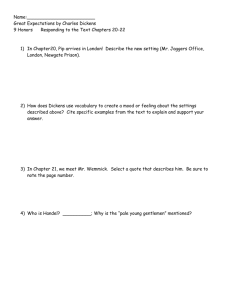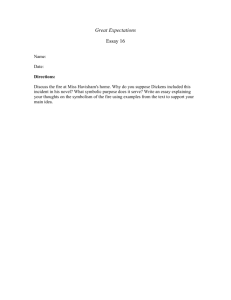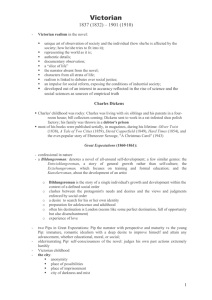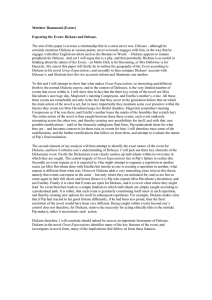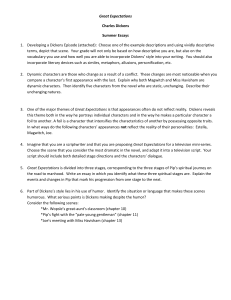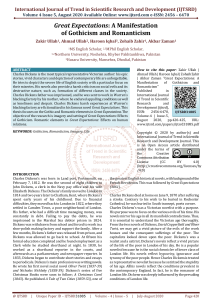Great Expectations Paper Assignment
advertisement
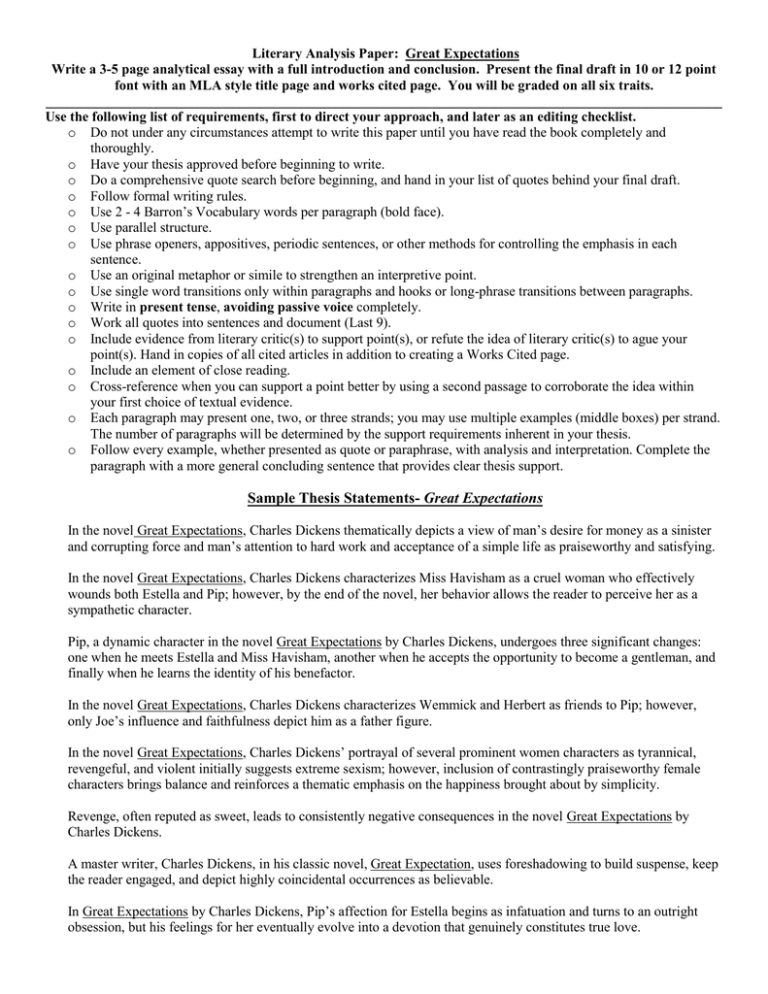
Literary Analysis Paper: Great Expectations Write a 3-5 page analytical essay with a full introduction and conclusion. Present the final draft in 10 or 12 point font with an MLA style title page and works cited page. You will be graded on all six traits. __________________________________________________________________________________________________ Use the following list of requirements, first to direct your approach, and later as an editing checklist. o Do not under any circumstances attempt to write this paper until you have read the book completely and thoroughly. o Have your thesis approved before beginning to write. o Do a comprehensive quote search before beginning, and hand in your list of quotes behind your final draft. o Follow formal writing rules. o Use 2 - 4 Barron’s Vocabulary words per paragraph (bold face). o Use parallel structure. o Use phrase openers, appositives, periodic sentences, or other methods for controlling the emphasis in each sentence. o Use an original metaphor or simile to strengthen an interpretive point. o Use single word transitions only within paragraphs and hooks or long-phrase transitions between paragraphs. o Write in present tense, avoiding passive voice completely. o Work all quotes into sentences and document (Last 9). o Include evidence from literary critic(s) to support point(s), or refute the idea of literary critic(s) to ague your point(s). Hand in copies of all cited articles in addition to creating a Works Cited page. o Include an element of close reading. o Cross-reference when you can support a point better by using a second passage to corroborate the idea within your first choice of textual evidence. o Each paragraph may present one, two, or three strands; you may use multiple examples (middle boxes) per strand. The number of paragraphs will be determined by the support requirements inherent in your thesis. o Follow every example, whether presented as quote or paraphrase, with analysis and interpretation. Complete the paragraph with a more general concluding sentence that provides clear thesis support. Sample Thesis Statements- Great Expectations In the novel Great Expectations, Charles Dickens thematically depicts a view of man’s desire for money as a sinister and corrupting force and man’s attention to hard work and acceptance of a simple life as praiseworthy and satisfying. In the novel Great Expectations, Charles Dickens characterizes Miss Havisham as a cruel woman who effectively wounds both Estella and Pip; however, by the end of the novel, her behavior allows the reader to perceive her as a sympathetic character. Pip, a dynamic character in the novel Great Expectations by Charles Dickens, undergoes three significant changes: one when he meets Estella and Miss Havisham, another when he accepts the opportunity to become a gentleman, and finally when he learns the identity of his benefactor. In the novel Great Expectations, Charles Dickens characterizes Wemmick and Herbert as friends to Pip; however, only Joe’s influence and faithfulness depict him as a father figure. In the novel Great Expectations, Charles Dickens’ portrayal of several prominent women characters as tyrannical, revengeful, and violent initially suggests extreme sexism; however, inclusion of contrastingly praiseworthy female characters brings balance and reinforces a thematic emphasis on the happiness brought about by simplicity. Revenge, often reputed as sweet, leads to consistently negative consequences in the novel Great Expectations by Charles Dickens. A master writer, Charles Dickens, in his classic novel, Great Expectation, uses foreshadowing to build suspense, keep the reader engaged, and depict highly coincidental occurrences as believable. In Great Expectations by Charles Dickens, Pip’s affection for Estella begins as infatuation and turns to an outright obsession, but his feelings for her eventually evolve into a devotion that genuinely constitutes true love.
